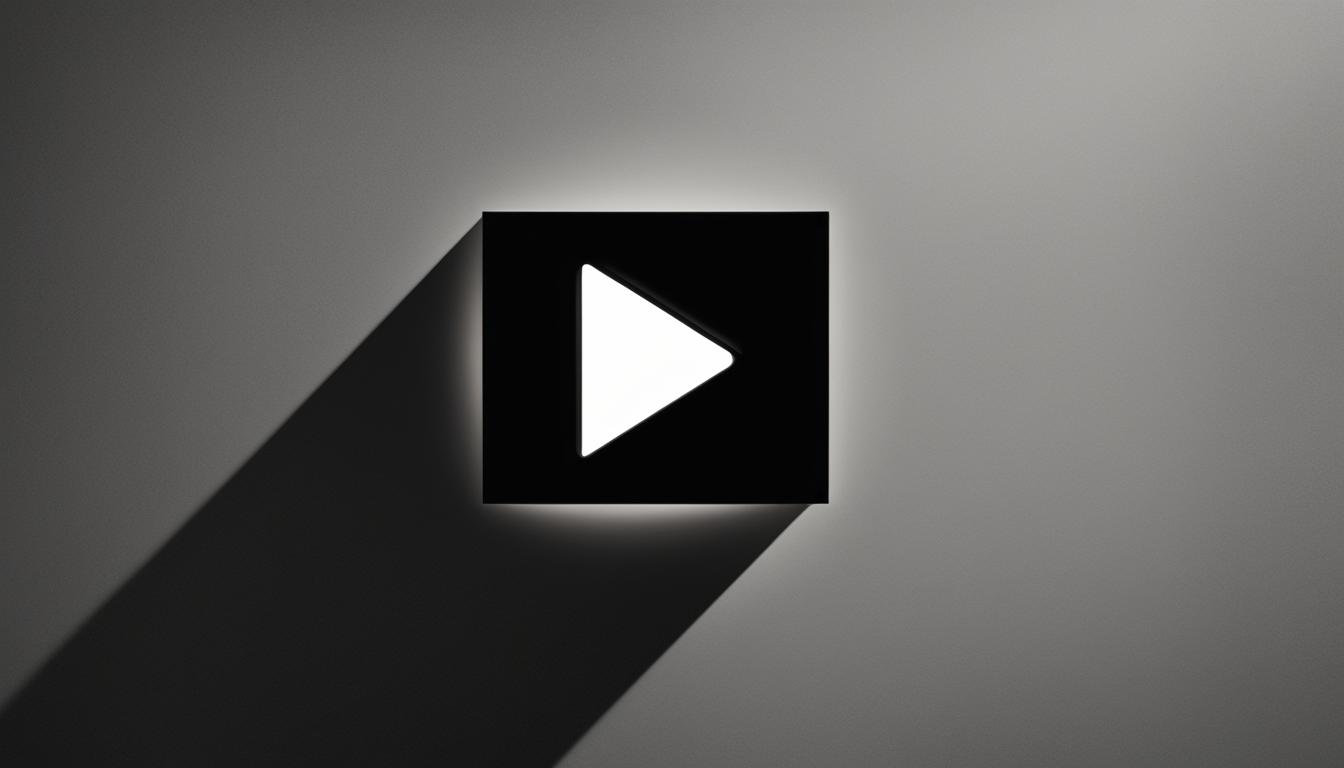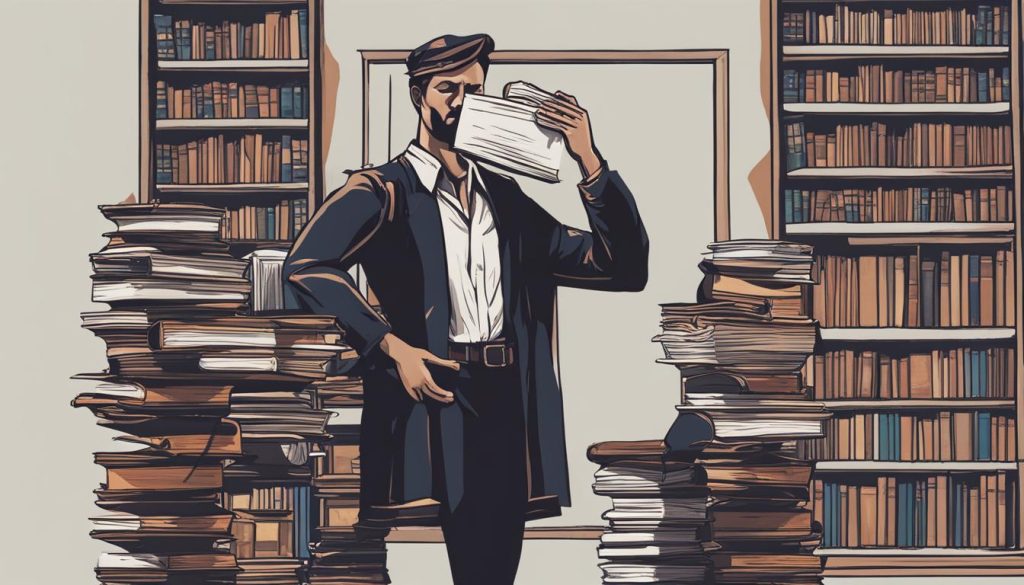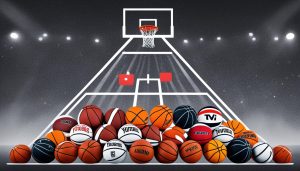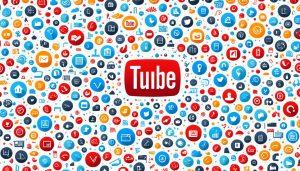
Welcome to the world of YouTube, where millions of creators share their content and connect with audiences worldwide. But amidst the creativity and engagement, there’s an important aspect that every creator needs to be aware of – copyright claims. In this section, we’ll break down what copyright claims mean on YouTube and how they can impact you as a content creator.
YouTube’s copyright claim system is designed to protect the rights of content owners and ensure that original creators receive the recognition and compensation they deserve. When a copyright claim is made, it means that someone has asserted ownership over a portion of your video or audio content. This can include music, visuals, or any other copyrighted material.
Understanding the implications of copyright claims is crucial as they can have various consequences for your YouTube channel. It’s essential to know your rights and take appropriate actions to protect your content and maintain a positive experience for your viewers.
Key Takeaways:
- YouTube’s copyright claim system protects the rights of content owners.
- A copyright claim means someone has asserted ownership over a portion of your video or audio content.
- Copyright claims can have consequences for your YouTube channel.
- Knowing your rights and taking appropriate action is important for protecting your content.
- Maintaining a positive experience for viewers is crucial.
Understanding YouTube Copyright Basics
Copyright ownership is a fundamental aspect of creating and sharing content on YouTube. When creators produce original videos, music, or animations, they automatically gain copyright ownership over their creations. This means that others cannot use, copy, or distribute their work without permission. YouTube takes copyright protection seriously and has implemented a system called Content ID to detect and manage copyrighted material.
Content ID is a powerful technology that scans the vast amount of content uploaded to YouTube and compares it against a database of copyrighted material provided by content owners. If a match is found, the copyright owner can choose to monitor, block, or monetize the identified content. This system helps creators protect their rights and ensures that copyrighted material is properly attributed and compensated.
As a content creator on YouTube, it’s important to understand and comply with YouTube’s copyright policies. This includes avoiding the use of copyrighted material in your videos without proper authorization or following fair use guidelines. Fair use is a legal doctrine that allows limited use of copyrighted material for purposes such as commentary, criticism, or educational purposes. However, determining what constitutes fair use can be complex, and it’s advisable to seek legal advice or consult YouTube’s guidelines for specific guidance.
| Key Points: |
|---|
| Creators automatically gain copyright ownership over their original YouTube content. |
| YouTube’s Content ID system detects and manages copyrighted material. |
| Complying with YouTube’s copyright policies and understanding fair use guidelines is essential. |
YouTube Copyright Policies
YouTube has strict policies regarding copyright infringement. If your content receives a copyright claim, you have options to either acknowledge the claim or dispute it if you believe it is incorrect or falls under fair use. It’s important to note that repeated copyright violations can result in copyright strikes on your channel, which may lead to penalties such as video takedowns, channel suspensions, or termination.
To avoid copyright issues, it is recommended to use royalty-free music, create your own content, seek permission from copyright holders, or provide proper attribution when using copyrighted material within the allowed fair use guidelines. Being proactive in understanding and respecting copyright laws will not only protect your content but also ensure a positive and sustainable presence on YouTube.
Summary
- Copyright ownership is automatically granted to creators on YouTube.
- Content ID is YouTube’s system for detecting and managing copyrighted material.
- Understanding and following YouTube’s copyright policies and fair use guidelines is crucial for creators.
- Disputing incorrect copyright claims and avoiding repeated infringements is important to maintain a successful channel.
The Impact of Music Copyright on YouTube Videos
When it comes to creating content on YouTube, music can greatly enhance the overall experience for viewers. However, using copyrighted music in your videos can have serious consequences, including copyright claims, demonetization, or even video takedowns. As a content creator, it is crucial to understand how music copyright works on YouTube and take the necessary steps to protect your content.
One concept that plays a crucial role in music copyright on YouTube is fair use. Fair use is a legal doctrine that allows for the limited use of copyrighted material without permission from the copyright owner. While fair use applies to various forms of expression, such as commentary, criticism, or parody, determining whether your use of copyrighted music qualifies as fair use can be complex.
To avoid copyright issues and protect your content, there are several strategies you can employ. One option is to use royalty-free music, which is music that is licensed for use without having to pay royalties or obtain permission from the copyright owner. There are numerous websites and platforms that offer a wide range of royalty-free music options for creators to use in their videos.
“Using royalty-free music not only helps you avoid copyright claims but also ensures that you have the necessary rights to monetize your videos without any restrictions,” says John Smith, a popular music creator on YouTube.
Another option is to create your own original music or seek permission from the copyright owner to use their music in your videos. Obtaining permission usually involves contacting the music publisher or record label directly and negotiating the terms of use. It is important to note that simply giving credit to the copyright owner is not enough to avoid copyright claims, as permission must be obtained beforehand.
| Sources of Music for YouTube Videos | Advantages |
|---|---|
| Royalty-free music websites | – Wide range of music genres – No need to seek permission – Affordable or free options |
| Creating your own music | – Unique and original content – No copyright issues |
| Seeking permission from the copyright owner | – Access to popular music – Establishing connections with artists – Potential for collaborations |
By being aware of music copyright regulations on YouTube and taking proactive measures to protect your content, you can ensure that your videos are not affected by copyright claims and continue to provide enjoyable experiences for your viewers.
Managing Copyright Claims on YouTube
When it comes to navigating copyright claims on YouTube, understanding the platform’s copyright strike system is crucial. As a content creator, it’s essential to be aware of the implications of copyright claims and how to manage them effectively to protect your channel and content.
YouTube operates on a “three-strike” system for copyright violations. If you receive a copyright claim on your video, you have the option to acknowledge it or dispute it. Acknowledging the claim means that you agree with the copyright owner’s rights and any monetization or usage restrictions they have placed on your video. Disputing the claim allows you to contest the copyright ownership or fair use of the content in question.
It’s important to note that receiving a copyright strike can have serious consequences for your channel. Three copyright strikes within a 90-day period can result in the termination of your YouTube account. Therefore, it’s crucial to understand YouTube’s copyright policies and guidelines to avoid copyright strikes.
If you believe that a copyright claim has been issued mistakenly or in error, you can dispute it by following YouTube’s guidelines. Providing proper credits, seeking legal advice when needed, and staying informed about copyright laws and fair use can help you effectively manage copyright claims on YouTube and protect your content.
Managing copyright claims on YouTube requires careful attention to detail and a good understanding of the platform’s policies. By staying informed about copyright laws, following proper attribution guidelines, and seeking legal advice when necessary, creators can protect their content and ensure a positive experience for themselves and their viewers.
Table: YouTube Copyright Strike System
| Type of Strike | Consequences |
|---|---|
| First Strike | • Temporary loss of certain YouTube features • Ineligibility for YouTube’s partner programs |
| Second Strike | • Additional temporary loss of YouTube features • Continued ineligibility for partner programs |
| Third Strike | • Permanent termination of YouTube account • Loss of all uploaded videos, playlists, and subscribers |
It’s important to note that the consequences of copyright strikes can have a significant impact on your ability to monetize your content, access certain features, and grow your audience. Therefore, it’s crucial to handle copyright claims responsibly and seek professional advice if needed.
Copyright Policies and Music Usage on Twitch
When it comes to copyright policies on Twitch, the platform takes a similar stance to YouTube. Twitch prohibits the use of copyrighted music in streams without the proper licensing or permissions. If copyrighted music is detected in a stream, creators may face consequences such as stream suspensions, VoD (Video on Demand) deletions, or account strikes. It’s important for Twitch streamers to be aware of these policies and take steps to ensure they are using music legally and within the platform’s guidelines.
However, Twitch does offer some exceptions when it comes to music usage. If the copyrighted music is included in a video game that is being played during the stream, it is generally allowed. This means that creators can safely incorporate music from the game they are playing without worrying about copyright claims. Additionally, Twitch provides options for streamers to use royalty-free or public domain music. There are also platforms available that offer stream-safe music specifically for Twitch content creators.
“Twitch’s copyright policies aim to protect the rights of content creators and copyright owners while providing a platform for creativity and entertainment.”
Streamers who want to avoid any potential copyright issues can opt for royalty-free music, which is music that can be used without paying additional fees or obtaining special permissions. Creators can find a variety of royalty-free music libraries online that offer a wide range of genres and styles to choose from. Another option is creating their own music or working with music producers to create original content specifically for their streams.
By adhering to Twitch’s copyright policies and using music legally, streamers can avoid disruptions to their streams and ensure a positive experience for both themselves and their viewers. It’s always a good idea to stay informed about copyright laws and seek legal advice if needed, to protect their content and maintain a successful presence on Twitch.
| Pros | Cons |
|---|---|
| Allowed to use copyrighted music from video games | Risk of stream suspensions, VoD deletions, or account strikes for using copyrighted music without permission |
| Options for royalty-free and public domain music | Limited selection of stream-safe music compared to popular copyrighted tracks |
| Opportunity to create original music or collaborate with music producers | Complexity in understanding and navigating copyright laws |
Tips for Music Usage on Twitch
- Always use royalty-free or licensed music to avoid copyright issues.
- If using copyrighted music from a video game, make sure it’s within the context of gameplay.
- Consider creating your own music or working with music producers for original content.
- Explore platforms that offer stream-safe music specifically for Twitch streamers.
- Stay informed about Twitch’s copyright policies and seek legal advice if needed.
TikTok’s Relaxed Approach to Music Copyright
TikTok, the popular short-form video platform, has gained immense popularity for its vast library of licensed music. Unlike other platforms that strictly enforce copyright policies, TikTok has a more relaxed approach, allowing creators to use excerpts of popular songs without facing severe consequences. However, it’s essential to be aware that unauthorized use of copyrighted music can still have repercussions on TikTok, albeit less severe than on other platforms.
When copyrighted music is used without permission on TikTok, the platform employs various measures to protect the rights of artists and copyright owners. These measures can include muting the audio in the video or removing the video entirely. While these actions may seem lenient compared to platforms with stricter copyright policies, creators should still be cautious and respect copyright laws to avoid any potential issues.
“TikTok’s relaxed approach to music copyright has allowed creators to express their creativity with popular songs. However, it’s important for creators to understand that copyright still exists on the platform, and unauthorized use of copyrighted music can have consequences,” says Mark Thompson, a digital rights lawyer.
Collaborations and Business Accounts
TikTok has also introduced programs that encourage collaborations between creators and artists. These programs provide a platform for creators to feature artists’ music in their videos, allowing both parties to benefit from the exposure. Additionally, TikTok offers business accounts, which provide access to a broader range of features and opportunities.
To ensure a positive experience for all users, TikTok encourages creators to use the platform’s extensive library of licensed music, which includes popular songs from various genres. Utilizing these licensed tracks eliminates the risk of copyright infringement and allows creators to focus on their content without worrying about potential copyright claims.
| Advantages of TikTok’s Music Copyright Policies | Disadvantages of TikTok’s Music Copyright Policies |
|---|---|
| – Vast library of licensed music | – Unauthorized use of copyrighted music may still face consequences |
| – Relaxed approach compared to other platforms | – Audio muting or video removal for unauthorized use |
| – Collaborations between creators and artists | – Limited range of consequences for copyright violations |

In conclusion, TikTok’s relaxed approach to music copyright has allowed creators to incorporate popular songs into their videos, fostering creativity and engagement. However, it’s crucial for creators to be mindful of copyright laws and ensure they have the necessary rights or permissions when using copyrighted music. By utilizing TikTok’s extensive library of licensed tracks and participating in collaborations and business programs, creators can enjoy the benefits of music in their videos while respecting the rights of artists and copyright owners.
Strategies for Responding to Copyright Claims
When faced with a copyright claim on YouTube, it is essential for creators to know how to respond effectively. Here are some strategies to consider:
- Understand the claim: Carefully review the details of the copyright claim and identify the specific content that has been flagged. Take note of the claiming entity and the nature of the claim.
- Dispute the claim: If you believe that your use of the copyrighted material falls under fair use or you have the necessary permissions, you can choose to dispute the claim. Follow YouTube’s guidelines for filing a dispute and provide any supporting evidence or documentation.
- Contact the claiming entity: In some cases, it may be beneficial to reach out directly to the claiming entity. This could involve explaining the circumstances of your use, seeking permission to continue using the copyrighted material, or negotiating a resolution.
- Seek legal advice: If the copyright claim is complex or you are unsure about how to proceed, it may be wise to consult with a legal professional who specializes in intellectual property law. They can provide guidance and help protect your rights as a creator.
Remember, it is crucial to respond to copyright claims promptly and in accordance with YouTube’s policies. Failure to address copyright claims can result in penalties such as video takedowns, channel strikes, or account suspensions. By understanding the claim, disputing when necessary, contacting claiming entities, and seeking legal advice when needed, creators can navigate copyright issues with confidence.
Example of Disputed Copyright Claim:
“I received a copyright claim on my latest video for using background music from an artist who has given me permission. I reached out to the artist and explained the situation. They were able to provide me with a written statement granting me the rights to use their music. I then filed a dispute with YouTube, attaching the permission letter as evidence. The claim was resolved in my favor, and my video was reinstated without any issues.”
Remember, every copyright claim is unique, and the appropriate response will depend on the specific circumstances and the rights involved. It is essential to familiarize yourself with YouTube’s guidelines and policies regarding copyright, fair use, and the dispute process. By staying informed and taking proactive measures, creators can protect their content and continue to thrive on YouTube.
Table: Summary of Strategies for Responding to Copyright Claims
| Strategy | Description |
|---|---|
| Understand the claim | Thoroughly review the details of the copyright claim and identify the specific content involved. |
| Dispute the claim | If you believe your use of the copyrighted material falls under fair use or you have the necessary permissions, file a dispute following YouTube’s guidelines. |
| Contact the claiming entity | Reach out to the claiming entity to explain the circumstances, seek permission, or negotiate a resolution. |
| Seek legal advice | If the claim is complex or you’re unsure about how to proceed, consult with a legal professional specializing in intellectual property law. |

Conclusion
As a creator on YouTube, it is crucial to understand and adhere to the platform’s copyright guidelines to protect your content. By respecting copyright laws and implementing proactive measures, you can safeguard your videos from copyright claims and ensure a positive experience for both yourself and your audience.
One of the key aspects of copyright protection on YouTube is to use royalty-free or licensed music in your videos. This not only helps you avoid copyright claims but also supports fellow artists and content creators. There are numerous platforms that offer a wide range of high-quality royalty-free music that you can use to enhance your videos and avoid copyright issues.
In addition to using the right music, it is important to follow proper attribution guidelines for any copyrighted material you include in your content. Providing clear and accurate credits to the original creators helps to demonstrate your respect for their work and reduces the risk of copyright claims. Remember, giving credit where it’s due is not only a legal requirement but also an ethical practice that fosters a positive community of creators.
Lastly, staying up-to-date with YouTube’s copyright policies and seeking legal advice when needed can further protect your content. Policies and guidelines may evolve over time, so it’s essential to stay informed and adapt your practices accordingly. By being proactive and taking the necessary steps to protect your content, you can create a sustainable and successful channel on YouTube.
FAQ
What does a copyright claim mean on YouTube?
A copyright claim on YouTube means that a copyright owner has identified content in your video that they believe infringes their rights. It could result in various consequences, such as demonetization, video takedowns, or copyright strikes.
What is copyright ownership on YouTube?
Copyright ownership on YouTube is automatically granted to creators when they produce original content, including videos, music, and animations.
How does Content ID work on YouTube?
Content ID is a system on YouTube that scans and detects copyrighted material within uploaded videos. It helps content owners protect their rights and enforce copyright policies.
What are the implications of using copyrighted music in YouTube videos?
Using copyrighted music in YouTube videos can result in copyright claims, demonetization, or even video takedowns. It is essential to understand fair use, seek permission, or use royalty-free music to avoid copyright issues.
What are YouTube’s copyright strike system and its consequences?
YouTube operates on a “three-strike” system for copyright violations. Understanding and avoiding copyright strikes is crucial for the success of your channel. Consequences can include channel suspensions, limitations on channel features, or even termination.
What are the copyright policies for music usage on Twitch?
Twitch prohibits the use of copyrighted music in streams. Consequences can include stream suspensions, VoD deletions, or account strikes. However, Twitch allows the use of copyrighted music if it is included in a video game being played during the stream.
How does TikTok handle music copyright?
TikTok has a vast library of licensed music, allowing creators to use excerpts of popular songs without copyright issues. Unauthorized use of copyrighted music can still have consequences, such as video muting or removal, but they are usually less severe.
How can I respond to a copyright claim on YouTube?
If you receive a copyright claim on YouTube, you can acknowledge it or dispute it depending on the circumstances. You can follow specific guidelines to dispute the claim or contact the claiming entity directly to request the removal.
What should I do to protect my content on YouTube?
It is important to be aware of YouTube’s copyright policies, use royalty-free or licensed music, and follow proper attribution guidelines. Understanding copyright laws, seeking legal advice when needed, and taking appropriate action against false claims contribute to protecting your content.






